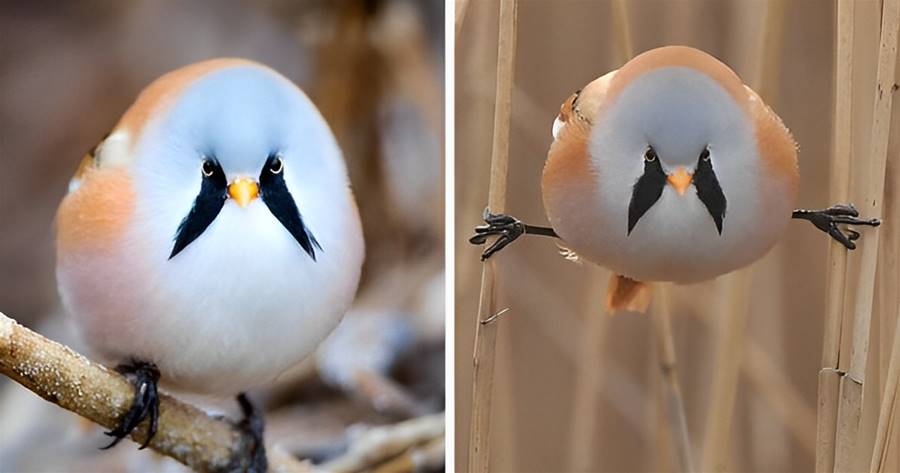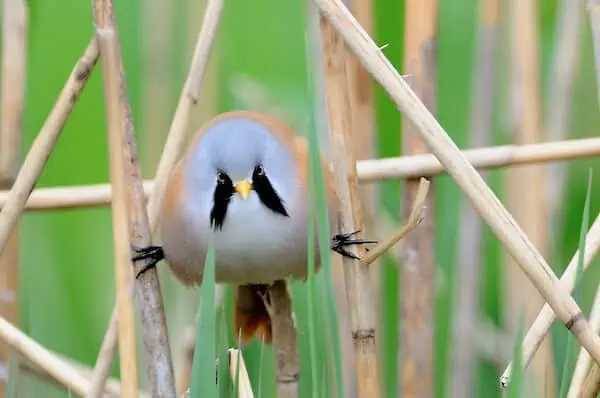

The Bearded Reedling is a unique bird, so much so that scientists historically weren’t sure what family of birds it should be a member of. It was moved around until finally it was decided that they just aren’t closely related to any living species and should get their very own group!
So they are currently the only member of the family, and their full scientific name is .

Bearded Reedlings are also known by a few nicknames. They are commonly called “bearded parrot bills” and “bearded tits”.
Even though we know now that they are not related to those other bird families, the nicknames persist.

Bearded Reedlings thrive in wetlands near freshwater or brackish water. As such you can find them in wet reedy areas next to marshes, swamps, lakes and rivers. Just as the name suggests, these birds prefer to nest in reed beds. They will establish entire colonies in reed beds that run along swamps and lakes.
Bearded Reedlings are known to do the splits between reeds. By grasping a separate reed with each foot, they can brace themselves in this split-stance to perch, reach food, or just help them maneuver around the thick reeds.
This stance is one of the most recognizable traits of the Bearded Reedling, and they look awful cute doing it!

One way these birds are able to manuver well among tightly packed reed beds is their small size. They can fit right in the palm of your hand as both juveniles and adults.
As adults, they are about 6.5 inches in length, about the size of a sparrow. They can weigh anywhere from 0.4 to 0.7 ounces, with a wingspan between 5.5 and 6.5 inches.
Bearded Reedlings are one of the bird species that are sexually dimorphic, which means males and females have different appearances. Both males and females have a tawny brown body with pale chest and belly, and white and black striping on their wings.
While females have a pale brown head, males are more striking with a gray head, bright yellow beak and two long black “moustache” marks that extend down from each eye.

Unlike many bird species, Bearded Reedlings don’t typically migrate. They can be found distributed across areas of the U.K., Europe and Asia and will remain year-round residents in their local range.
The exception to this is they may travel to escape unusually cold winter weather. Extremely harsh cold weather can be potentially deadly to these small birds.
When you look at the name, it seems obvious that Bearded Reedlings would consume reed seeds. Seeds from reeds and other marsh grasses do make up part of their diet, and they often perch right on the reed stalk to eat the seeds while still on the plant.

However that is not the only thing they eat. Especially during the summer months, they eat a lot of insects including mayflies, mosquitos, midges, spiders and slugs.
They will forage around the edges of open water, in muddy grounds, and wetlands to find the food they need. Larvae and pupa of these aquatic insects are also on the menu.
Both sexes will participate in . Their cup-shaped nests are constructed of dead reeds and leaves from other wetland plants.
The inside of the nest will be lined with soft material such as feathers, flower heads and sometimes animal hair.

A true team, both males and females will take turns incubating the eggs for about 10-14 days before they hatch. Both parents also work together to take care of and feed the hatchlings, which take about 2 weeks to grow large enough to leave the nest.
